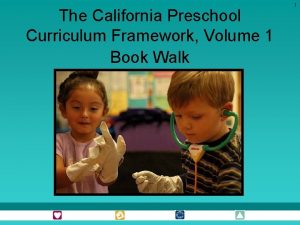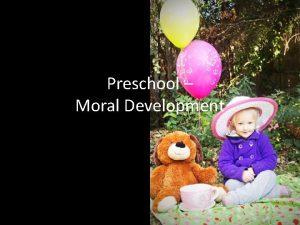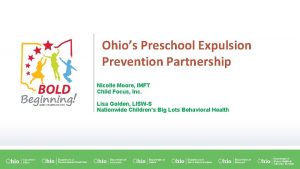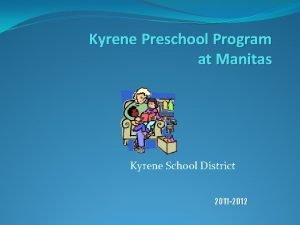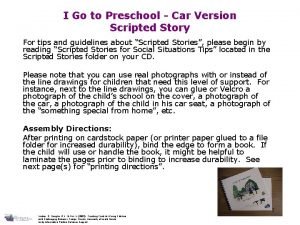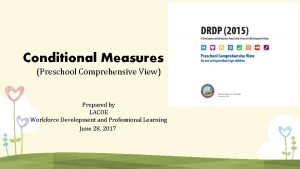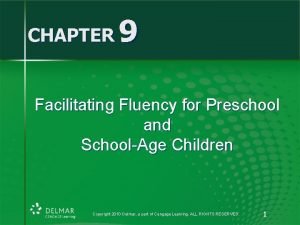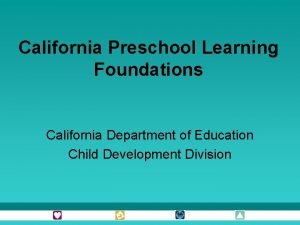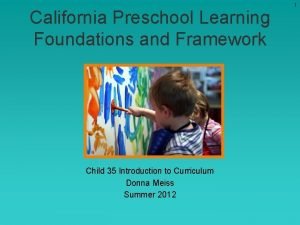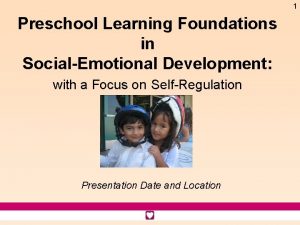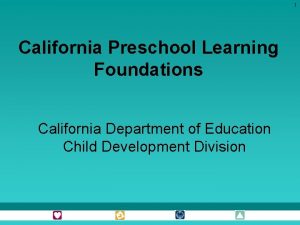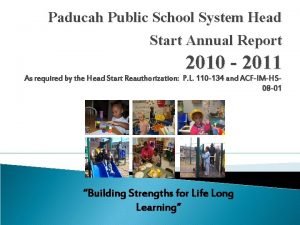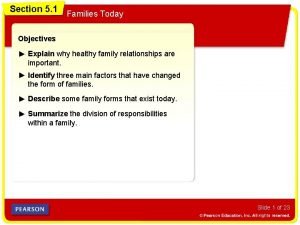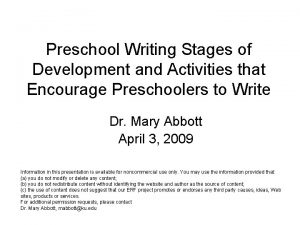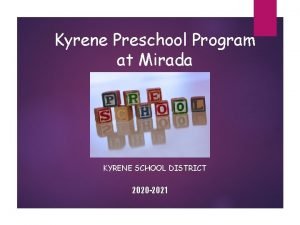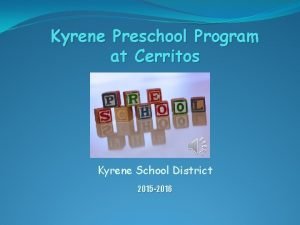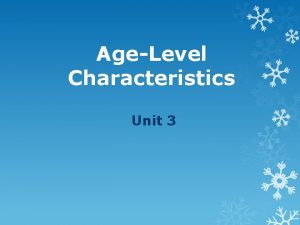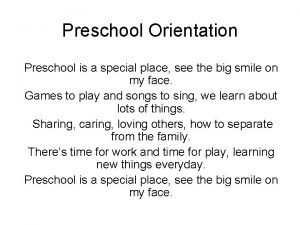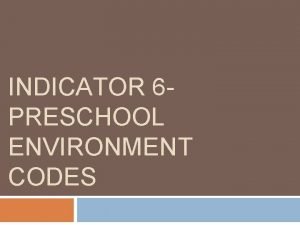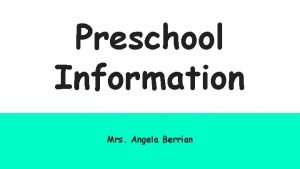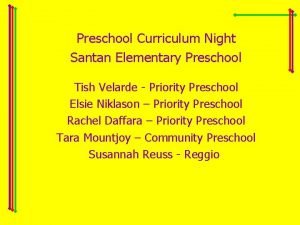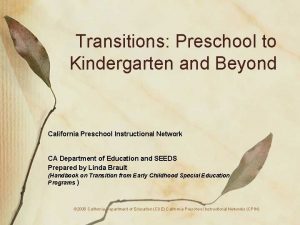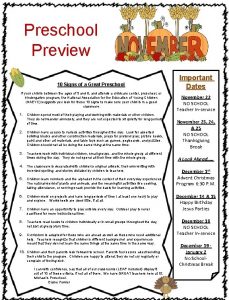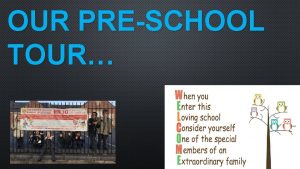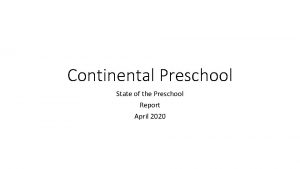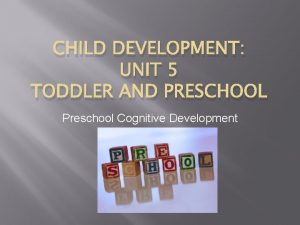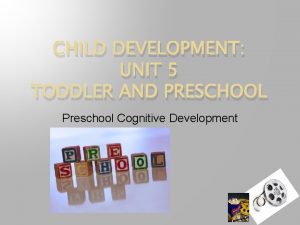Chapter Three AgeLevel Characteristics Overview Children in preschool





























- Slides: 29

Chapter Three Age-Level Characteristics

Overview • • • Children in preschool and kindergarten Children in the primary grades Children in the elementary grades Youth in middle school Youth in high school Selecting technologies for different age levels Copyright © Houghton Mifflin Company. All rights reserved. 2

Physical Characteristics of Children in Preschool and Kindergarten • Children are extremely active. • Children need frequent rest periods. • Children’s large muscles are more developed than those that control fingers and hands. • Eye-hand coordination is still developing. • Children’s bodies are flexible and resilient. • Gender differences do not emerge until kindergarten. Copyright © Houghton Mifflin Company. All rights reserved. 3

Social Characteristics of Children in Preschool and Kindergarten • Most children have one or two best friends, but these friendships change rapidly. • Children exhibit many different play behaviors. • Play patterns may vary as a function of social class and gender. • Children show preferences for gender of play peers and for pair vs. group play. • Awareness of gender roles and gender typing is evident. Copyright © Houghton Mifflin Company. All rights reserved. 4

Types of Play Behavior • Unoccupied behavior – Children do not really play at all; stand around and look at others • Solitary play – Children play alone with toys; make no attempt to interact • Onlooker behavior – Children spend most of their time watching others; may make comments but do not interact Copyright © Houghton Mifflin Company. All rights reserved. 5

Types of Play Behavior • Parallel play – Children play beside but not really with other children • Associative play – Children engage in rather disorganized play with other children • Cooperative play – Children engage in an organized form of play Copyright © Houghton Mifflin Company. All rights reserved. 6

Emotional Characteristics of Children in Preschool and Kindergarten • Children tend to express their emotions freely and openly, with anger bursts being frequent. • Jealousy among classmates is fairly common as these children tend to have much affection for their teacher and actively seek approval. Copyright © Houghton Mifflin Company. All rights reserved. 7

Cognitive Characteristics of Children in Preschool and Kindergarten • Children begin to develop a theory of mind. • Children are becoming quite skillful with language. • Children may overgeneralize rules in using language. • Competence is encouraged by interaction, interest, opportunities, and signs of affection. Copyright © Houghton Mifflin Company. All rights reserved. 8

Parenting Styles • Authoritative – Establish limits and explain reasons for restrictions; encouraging; warm and affectionate • Authoritarian – Make demands and wield power; failure to take into account child’s view; lack of warmth • Permissive – Disorganized and inconsistent; allow children to make own decisions; make few demands of children • Rejecting-neglecting – Make no demands; do not respond to emotional needs of children Copyright © Houghton Mifflin Company. All rights reserved. 9

Physical Characteristics of Children in the Primary Grades (1 -3) • Children are still extremely active. • Children still need rest period because they become fatigued easily. • Large-muscle control is still superior to fine coordination. • Children may have difficulty focusing on small print or objects. • Children tend to be extreme in their physical activities. • Bone growth is not yet complete. Copyright © Houghton Mifflin Company. All rights reserved. 10

Social Characteristics of Children in the Primary Grades (1 -3) • Children become somewhat more selective in their choice of friends and are likely to have a more permanent best friend. • Children like organized games but may become overly concerned with rules. • Quarrels are still frequent. Copyright © Houghton Mifflin Company. All rights reserved. 11

Emotional Characteristics of Children in the Primary Grades (1 -3) • Children are sensitive to criticism and ridicule and may have difficulty adjusting to failure. • Most children are eager to please the teacher. • Children of this age are becoming sensitive to the feelings of others. Copyright © Houghton Mifflin Company. All rights reserved. 12

Cognitive Characteristics of Children in the Primary Grades (1 -3) • Children understand that there are different ways to know things and that some ways are better than others. • Children begin to understand that learning and recall are caused by cognitive processes that they can control. • Children of this age do not learn as efficiently as older children. • Talking aloud to oneself reaches a peak between the ages of six and seven. Copyright © Houghton Mifflin Company. All rights reserved. 13

Physical Characteristics of Children in the Elementary Grades (4 -5) • Boys and girls become leaner and stronger. • Obesity can become a problem for some children of this age group. • Gender differences in motor skill performance are apparent. • This is a period of relative calm and predictability in physical development. Copyright © Houghton Mifflin Company. All rights reserved. 14

Social Characteristics of Children in the Elementary Grades (4 -5) • The peer group becomes powerful and begins to replace adults as the major source of behavior standards. • Friendships become more selective and gender based. Copyright © Houghton Mifflin Company. All rights reserved. 15

Emotional Characteristics of Children in the Elementary Grades (4 -5) • Children develop a more global, integrated, and complex self-image. • Disruptive family relationships, social rejection, and school failure may lead to delinquent behavior. Copyright © Houghton Mifflin Company. All rights reserved. 16

Cognitive Characteristics of Children in the Elementary Grades (4 -5) • Children can think logically, although such thinking is constrained and inconsistent. • On simple memory tasks, children this age can perform as well as adolescents or adults. • With more complex memory tasks, the performance of children this age is limited. Copyright © Houghton Mifflin Company. All rights reserved. 17

Physical Characteristics of Adolescents in Middle School • Physical growth tends to be both rapid and uneven. • Pubertal development is evident in practically all girls and in many boys. • Concern and curiosity about sex are almost universal. Copyright © Houghton Mifflin Company. All rights reserved. 18

The Impact of Early and Late Maturation on Boys Maturational Stage Characteristics as Adolescents as Adults Early-maturing boys Self-confident, high in self-esteem, likely to be chosen as leaders Self-confident, responsible, cooperative, sociable, rigid, moralistic, humorless, and conforming Late-maturing boys Energetic, bouncy, given to attention-getting behavior, not popular, lower aspirations for educational achievement Impulsive, assertive, insightful, perceptive, creatively playful, able to cope with new situations Copyright © Houghton Mifflin Company. All rights reserved. 19

The Impact of Early and Late Maturation on Girls Maturational Stage Characteristics as Adolescents as Adults Early-maturing girls Not popular or likely to be leaders, indifferent in social situations, lacking in poise Self-possessed, selfdirected, able to cope, likely to score high in ratings of psychological health Late-maturing girls Confident, outgoing, assured, popular, likely to be chosen as leaders Likely to experience difficulty adapting to stress, likely to score low in ratings of overall psychological health Copyright © Houghton Mifflin Company. All rights reserved. 20

Social Characteristics of Adolescents in Middle School • The development of interpersonal reasoning leads to greater understanding of the feelings of others. • The desire to conform reaches a peak at this age. Copyright © Houghton Mifflin Company. All rights reserved. 21

Stages of Interpersonal Reasoning (Selman, 1980) • • • Stage 0 – Egocentric level Stage 1 – Social information role taking Stage 2 – Self-reflective role taking Stage 3 – Multiple role taking Stage 4 – Social and conventional system taking Copyright © Houghton Mifflin Company. All rights reserved. 22

Emotional Characteristics of Adolescents in Middle School • View of adolescence as a period of “storm and stress” is exaggerated. • Middle school students are often selfconscious and self-centered as a result of the continued influence of egocentric thought. Copyright © Houghton Mifflin Company. All rights reserved. 23

Cognitive Characteristics of Adolescents in Middle School • Middle school students need a classroom environment that is open, supportive, and intellectually stimulating. • Self-efficacy becomes an important influence on intellectual and social behavior. Copyright © Houghton Mifflin Company. All rights reserved. 24

Physical Characteristics of Adolescents in High School • Most students reach physical maturity and virtually all attain puberty. • Many adolescents are sexually active but the long-term trend is down. • The birthrate for unmarried adolescents has fallen in recent years yet it is still unacceptably high. • The rate of sexually transmitted diseases is also rather high for high school students. Copyright © Houghton Mifflin Company. All rights reserved. 25

Social Characteristics of Adolescents in High School • Parents and other adults are likely to influence long-range plans. • Peers are likely to influence immediate status. • Girls seem to experience greater anxiety about friendships than boys do. • Many high school students are employed after school. Copyright © Houghton Mifflin Company. All rights reserved. 26

Emotional Characteristics of Adolescents in High School • Many psychiatric disorders either appear or become prominent during adolescence. • The most common type of emotional disorder during adolescence is depression. • If depression becomes severe, suicide may be contemplated. Copyright © Houghton Mifflin Company. All rights reserved. 27

Cognitive Characteristics of Adolescents in High School • High school students become increasingly capable of engaging in formal thought, but may not use this ability. • Between the ages of 12 and 16, political thinking becomes more abstract, liberal, and knowledgeable. Copyright © Houghton Mifflin Company. All rights reserved. 28

Selecting Technologies for Different Age Levels • Technology and literacy – Bubble Dialogue • Using technology to reduce egocentrism – Keypals, global classrooms, electronic “appearances, ” telementoring, question-andanswer services, impersonation projects • Effect of technology on cognitive and interpersonal reasoning – Virtual field trip, adventure learning, Copyright © Houghton Mifflin Company. All rights reserved. 29
 Drdp essential view
Drdp essential view Pre k curriculum california
Pre k curriculum california Preschool in ukraine
Preschool in ukraine Preschool moral development
Preschool moral development Preschool to prison pipeline
Preschool to prison pipeline Kyrene school district preschool
Kyrene school district preschool Iqpps
Iqpps Scripted stories for preschool
Scripted stories for preschool Clouds etiwanda school district
Clouds etiwanda school district Drdp (2015 fundamental view)
Drdp (2015 fundamental view) Preschool fluency activities
Preschool fluency activities California learning foundations
California learning foundations California preschool learning foundations volume 1
California preschool learning foundations volume 1 Bus stop preschool
Bus stop preschool Saguaro infant care and preschool
Saguaro infant care and preschool Preschool learning foundations volume 3
Preschool learning foundations volume 3 Preschool learning foundations social emotional
Preschool learning foundations social emotional Preschool learning foundations
Preschool learning foundations Paducah head start preschool
Paducah head start preschool Kpi for preschool teachers
Kpi for preschool teachers Hippy home instruction for parents of preschool youngsters
Hippy home instruction for parents of preschool youngsters Preschool learning foundations math
Preschool learning foundations math Minneapolis preschool screening instrument-revised (mpsi-r)
Minneapolis preschool screening instrument-revised (mpsi-r) Clovis unified preschool
Clovis unified preschool 5-1 changing households
5-1 changing households Stages of writing preschool
Stages of writing preschool Tustin school district map
Tustin school district map Hollingworth preschool
Hollingworth preschool Kyrene preschool
Kyrene preschool Kyrene school district preschool
Kyrene school district preschool

